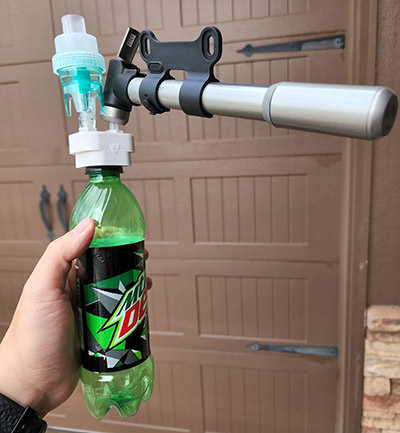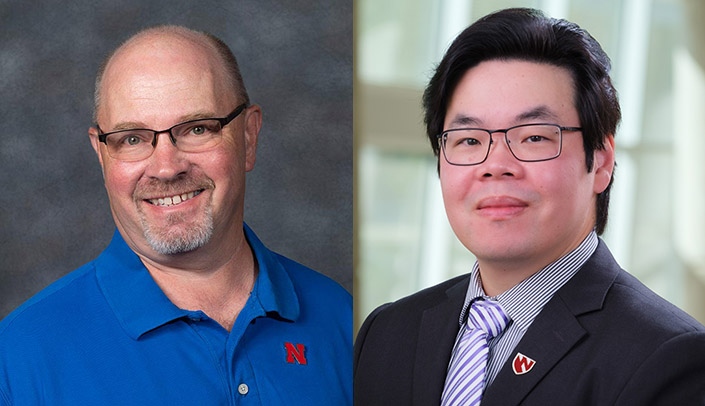Open-source software can be an inspirational concept. It was for the UNMC Department of Emergency Medicine.
"You identify some sort of problem that exists that can be solved, but the solution is not on the market," said Thang Nguyen, PhD, assistant professor of emergency medicine. Then, amateurs and professionals around the world get together on online forums to program a solution to the problem.
 |
| The Project FreeAir asthma nebulizer |
The resulting software "lives in the open space, where anyone can use it," Dr. Nguyen said. Anyone can tweak it or adapt it. For example, touchscreens in our cars, Dr. Nguyen said, are built upon open source-developed tech.
So why not do this with medical problems that require the invention of more accessible medical devices?
Emergency medicine faculty formed Open-MediciNE, an initiative to invent DIY-able medical equipment for open-source use. The goal is to address global health disparities with affordable, accessible medical devices.
One of their first challenges was to create a low-cost, non-electric DIY asthma nebulizer. They called the challenge Project FreeAir.
"Globally, patients don’t have electricity, they don’t have batteries," Dr. Ngyuen said.
They don’t have money, either.
So the team created a device that can deliver aerosolized medication using 3D printed parts, a soda bottle and a bike pump.
It came about through a true open-source collaboration that included UNeMed, UNeTech and a local mattress manufacturer, Omaha Bedding Company (really).
But the project made a crucial leap when UNeTech’s Joe Runge, JD, introduced Open-MediciNE to the University of Nebraska-Lincoln College of Engineering and Kevin Cole, PhD.
"I did some back-of-the envelope calculations and provided a few ideas," Dr. Cole said. But his best idea was suggesting they bring in the students on engineering’s senior design capstone team.
"We showed them the (designs) we had success with and the ones we failed with," Dr. Nguyen said.
Download the open-source files.
The team decided one of the key parts would be a soda bottle. "They are everywhere, all over the globe," Dr. Nguyen said. "And the caps, the threads are universal. That made it easy."
"Projects such as the nebulizer are great projects for student teams because they generate great interest and enthusiasm in the students due to the impact on people's lives the projects can potentially have," said UNL’s Kurt Palik, assistant professor of practice.
With 3D printers it cost $1.25 to print a crucial piece. Soda bottles are everywhere. In developing countries, not everyone has a car, but many have bike pumps.
Emergency medicine and Open-MediciNE believe this will help patients worldwide. They believe someone out there will make this invention even better. And they believe this is just the beginning of what Open-MediciNE will do.

The UNL – College of Engineering team was instrumental in the success of the project. So I would like to thank Bryce Bonner, Gordon Chou, Wesley Matheny, Jack Mar, and Thomas Simon for their dedication and hard work. Thank you!